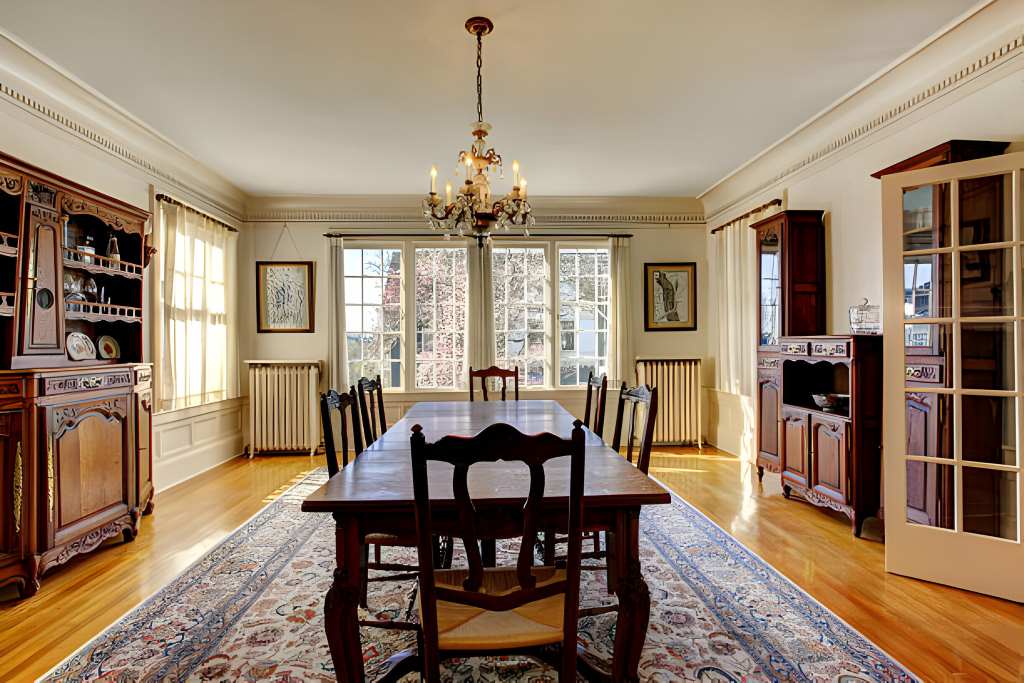Wood has always been a prominent material in interior design, lending warmth, character, and a sense of connection to nature to any space. In recent years, there has been a resurgence of interest in refurbishing and repurposing wood furniture as a sustainable and creative way to enhance home décor.
This trend not only adds unique touches to living spaces but also contributes to environmental conservation efforts by reducing waste. In this article, we delve into the art of wood furniture refurbishing and how it can elevate home design.
Understanding Wood Furniture Refurbishing
Wood furniture refurbishing involves restoring or updating old or worn-out wooden pieces to breathe new life into them. It can encompass a wide range of techniques, from simple repairs and refinishing to more intricate processes like painting, staining, and distressing.
The goal is to preserve the inherent beauty of the wood while refreshing its appearance to suit modern aesthetics. If you are looking for wood furniture refurbishing for home design, you may visit The Refurb.
The Process and Techniques
Wood furniture refurbishing encompasses a variety of processes and techniques aimed at restoring, refreshing, or updating old or worn-out wooden pieces. This includes everything from simple repairs and refinishing to more intricate methods like painting, staining, distressing, and decorative treatments.
Each step of the refurbishing process plays a crucial role in transforming the appearance and functionality of the furniture while preserving its inherent beauty and character.
Embracing Sustainability
One of the primary motivations behind the growing popularity of wood furniture refurbishing is its sustainability factor. By giving old furniture a makeover instead of discarding it, homeowners can significantly reduce their carbon footprint and minimize waste.
Repurposing existing wood items also decreases the demand for new materials, thereby conserving natural resources and promoting eco-conscious living.

Reducing Waste and Carbon Footprint
Refurbishing wood furniture is a sustainable practice that helps reduce waste by giving old pieces a new lease on life instead of discarding them. By extending the lifespan of furniture items, homeowners can minimize the amount of wood ending up in landfills, thus contributing to environmental conservation efforts and lowering their carbon footprint.
Personalization and Creativity
Refurbishing wood furniture offers endless opportunities for personalization and creativity. Whether it’s transforming a vintage dresser into a chic statement piece or revamping a weathered coffee table with a pop of color, the process allows individuals to express their unique style and vision.
From choosing the perfect finish to experimenting with different techniques, each refurbishing project becomes a reflection of the homeowner’s tastes and preferences.
Endless Possibilities for Expression
Refurbishing wood furniture offers limitless opportunities for personalization and creativity. From selecting the perfect color palette to experimenting with various techniques, each project becomes a canvas for self-expression.
Whether it’s infusing a piece with bold, modern flair or preserving its vintage charm, homeowners can imbue their refurbished furniture with unique touches that reflect their individual style and personality.
Preserving History and Sentiment
Many wooden furniture pieces hold sentimental value, whether they’re heirlooms passed down through generations or cherished finds discovered in thrift stores or flea markets. Refurbishing these pieces not only preserves their history and craftsmanship but also imbues them with new memories and stories.
Incorporating refurbished furniture into home interior design adds layers of meaning and authenticity to the space, creating a sense of continuity and connection with the past.
Tools and Materials
Before embarking on a wood furniture refurbishing project, it’s essential to gather the necessary tools and materials. Basic supplies may include sandpaper or a sanding block for smoothing surfaces, wood filler for repairing imperfections, paint or stain for adding color or enhancing the wood’s natural beauty, brushes or rollers for application, and protective finishes such as varnish or wax to seal and protect the surface.

Step-by-Step Refurbishing Process
The step-by-step refurbishing process involves assessing the furniture’s condition, preparing the surface by cleaning and repairing any damages, sanding to create a smooth canvas, applying finishes like paint or stain to achieve the desired look, sealing the surface for protection, and finally reassembling the piece to its former glory.
- Assessment: Begin by assessing the condition of the furniture piece, identifying any damage, scratches, or imperfections that need attention.
- Preparation: Remove any hardware, such as knobs or handles, and clean the surface thoroughly to remove dirt, grime, and old finishes.
- Repair: Use wood filler to fill in cracks, holes, or gouges, and allow it to dry completely before sanding the surface smooth.
- Sanding: Sand the entire surface of the furniture using progressively finer grits of sandpaper until it’s smooth and free of blemishes.
- Finishing: Apply paint, stain, or other finishes according to your desired look and style, following the manufacturer’s instructions for proper application and drying times.
- Sealing: Once the finish has dried, apply a protective sealant such as varnish or wax to enhance durability and longevity.
- Reassembly: Reattach any hardware and ensure that all components are securely fastened before placing the refurbished furniture back in its intended space.
Inspiring Wood Furniture Refurbishing Ideas
Revitalize old furniture with distressed finishes for a rustic charm or experiment with two-tone effects to create visual interest. Explore decoupage techniques to add texture and personality, or opt for stencil designs to infuse a touch of creativity into your refurbishing projects.
- Distressed Finishes: Create a rustic or shabby-chic look by distressing wood furniture with sandpaper or a wire brush to reveal layers of paint or stain underneath.
- Two-Tone Effects: Experiment with contrasting colors or stains to highlight different parts of the furniture, such as the legs, drawers, or tabletop.
- Decoupage: Add visual interest and texture by decoupaging decorative paper or fabric onto the surface of the furniture, then sealing it with a clear coat for protection.
- Stencil Designs: Use stencils to embellish wood furniture with intricate patterns or motifs, adding a personalized touch to the overall design.
- Natural Wood Finishes: Celebrate the natural beauty of wood by opting for clear finishes that enhance the grain and texture of the material while protecting against wear and tear.

Conclusion
Wood furniture refurbishing offers a captivating journey into the world of creativity, sustainability, and self-expression in home design. By breathing new life into old wooden pieces, homeowners can transform their living spaces while minimizing their environmental impact.
Whether it’s restoring a family heirloom or revamping a thrifted find, the process of refurbishing wood furniture is as rewarding as it is transformative, resulting in timeless pieces that tell stories for generations to come.

